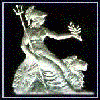|
|
The current range of books. Click the image above to see them on Amazon (printed and Kindle format). More info on coinpublications.com |
|
|

1860 Obverse 6 Half Penny
By
Bronze & Copper Collector, in Confirmed unlisted Varieties.
 Coinpublications.com
Coinpublications.com